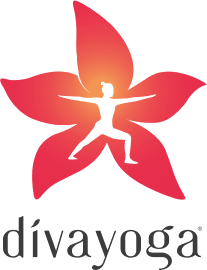Your Personal Yoga Therapist.
An empathetic coach who will listen and solve your health problems like,
- Migraine, Asthma, Sinus, Allergies.
- Thyroid, PCOS, and Diabetes.
- Stomach, liver, kidney & heart disorders.
- High Blood pressure and cholesterol.
- Arthritis and other problems.
- Depression and anxiety.
Book FREE Session
830,000+ happy yogis
Why do you need a Yoga therapist along with your medications?
About 422 million of the world population between 19-79 years has Diabetes. Yoga helps regularise the blood insulin level.
Approx. 200 million lives worldwide are affected by Thyroid. Yoga can help improve thyroid health.
Around 27% of the world population has Hypertension. Yoga helps lower high blood pressure.
42% of the world population struggles with cardiovascular disorders. Yoga improves the heart health by lowering high BP and cholesterol levels.
On an average about 98.2% of the world population recovered from COVID-19. Yoga is proven to be beneficial to improve immunity and build lung capacity.
About 15.7% of the population is reported to have mental health disorders. The actual numbers being higher than reported cases.
How is Yoga therapy different from other forms of yoga?
- Yoga therapy is a personalized approach to help with a specific medical ailment in addition to the medication that you’re currently on.
- Yoga therapy works in tandem with medication to reduce the severity of symptoms and help with sustainable recovery.
- Yoga therapy is given only under the guidance of expert therapists, who have complete knowledge of human anatomy.
- Yoga therapy sessions are often followed by DIY yoga techniques which allow long term lifestyle changes and adopting mindful habits in daily life.
How will this personalized program help?
Body-Mind Integration
Boost immunity
Beginner friendly
Home-based remedies
Better mental health
2x the recovery
Is yoga therapy safe?
The benefits of therapy yoga are wide-ranging, spread across body, mind, nourishment and spirit.
Here are some common misconceptions around yoga therapy.
Will yoga therapy interfere with my medication?
What all will I have to give up for yoga therapy?
I have not exercised in over an year, can yoga therapy?
Therapy sounds serious. I don’t have anything serious
What all therapy options are available?
Yoga therapy is a never ending process?
Yoga is not just about asana practice. It has more benefits to offer, such as:
- Detoxification of internal organs.
- Improved Skin and hair quality.
- Improved breath control.
- Balanced metabolism.
- Improved cardio health.
- Improved energy and vitality.
Share it with someone who might be unsure about their goals, but want to achieve a happy and healthy body, mind and soul.
MEET OUR CERTIFIED INSTRUCTORS
Only from the top 5 Indian yoga training institutes.
Trained in Rishikesh, the Yoga capital of the world, well versed in Yoga sutras yet modern in their approach, educated for the evolved human anatomy, and the spiritual workings of the mind. Our instructors bring a collective experience of over 100 years into a seamless fitness ecosystem for all.
VIEW ALL COACHES
Complete your 1-on-1 15 min wellness consultation session
Tell our experts all your problems and get counselling within 5 minutes of starting the class.
Purchase a plan that works for you
When you’re happy with the class, select a plan of your preferred duration.
Start your journey with SARVA
Start practising with us everyday, with our weekly tracker, expert recommendations and constant support.
Stories from our community
From incorporating mindfulness in the classroom to having virtual yoga practice with friends around the world, tune in to see how our community uses SARVA.
Featured in
FAQs
Which yoga is best for diabetes?
Therapeutic yoga, performed under the guidance of an expert yoga therapist is considered best practice for managing diabetes.
What is the yoga poses for diabetes?
Trikonasana and parshwakonasana are considered to be the most effective yoga asanas for diabetes.
Who can do yoga for diabetes?
Ideally, the yoga flows are curated to help diabetic people and those who have abnormal insulin levels, but anyone can practise this form.
Can yoga cure diabetes?
Yes, with regular practice and making a few lifestyle changes and dietary changes (after consulting a certified nutritionist) one can easily manage diabetes.
Does Kapalbhati cure diabetes?
Kapalbhati pranayam is considered beneficial to regularise blood insulin levels. But regular practice of Pranayama should be combined with yoga asanas for significant results.
How is yoga for diabetes beneficial for you?
Yoga for diabetes can help in the following ways:
1. Enhances the digestion capacity.
2. Bloating, flatulence will be addressed completely.
3. As the metabolism improves extra glucose will be converted to glycogen.
How to cure thyroid by yoga?
By regular practice of therapeutic yoga with an expert yoga therapist and making substantial lifestyle changes to improve the thyroid gland’s health.
Can yoga help your thyroid?
Definitely, yoga poses stimulate the glandular system as they work on the periphery of the body and ensure optimum functioning, glandular secretions are healthily utilized without wastage.
Which yoga is best for the thyroid?
Therapeutic yoga works best, as it provides complete synchronization between breath and movement of the body parts. Some of the yoga poses you can try are: Supta virasana, Paschimottanasana, Setubandhasana, Sarvangasana.
Can yoga cure the thyroid permanently?
With constant practice of therapy yoga flows and making suitable lifestyle changes, we can comfortably manage thyroid over time.
Can pranayama cure thyroid?
Pranayama helps in the thyroid but it is advisable to combine it with asanas. The most effective pranayama for managing thyroid is Ujjayi. It works on the throat area and its relaxing and stimulating effects are most probably due to the stimulation of ancient reflex pathways within the throat.
Which Mudra is good for the thyroid?
The most effective mudra is Jalandhara Bandha as it applies pressure to the thyroid gland area. It is an advanced level pose and should be practiced with care. The other mudras to try are, the potent maha bandha, maha mudra, and maha bheda mudra.
Which yoga is best for high blood pressure?
Therapeutic yoga in which whole awareness is on the breath and alignment of the body is considered to be the best form in such a case.
Best yoga asanas to reduce high BP?
Viparitakarani, the inverted posture is the best asana because it regularises the blood flow in the body and improves heart functioning.
Can yoga reduce blood pressure?
Yes, with a regular practice of yoga and mindful eating, irregular blood pressure can be regularised over time.
Yoga poses to control high blood pressure?
Paschimottanasana is the best asana to control blood pressure as it soothes the nerves and improves the function of the sympathetic nervous system.
Can yoga cure high BP?
Definitely, high blood pressure is caused by low elasticity of the blood vessels which can be improved by practicing certain asanas.
Can I permanently cure high blood pressure by doing yoga at home?
Absolutely, yoga asanas are designed to rinse and dry every organ of the body. They help stretch every nerve, blood vessel, muscle, organ, so that blood supply increases. Practicing yoga at home under the guidance of a certified yoga instructor will ensure positive results.
Which asana should not be done in high BP?
Chakrasana should not be practised during the initial days of the practice as it tends to increase the heart rate.






